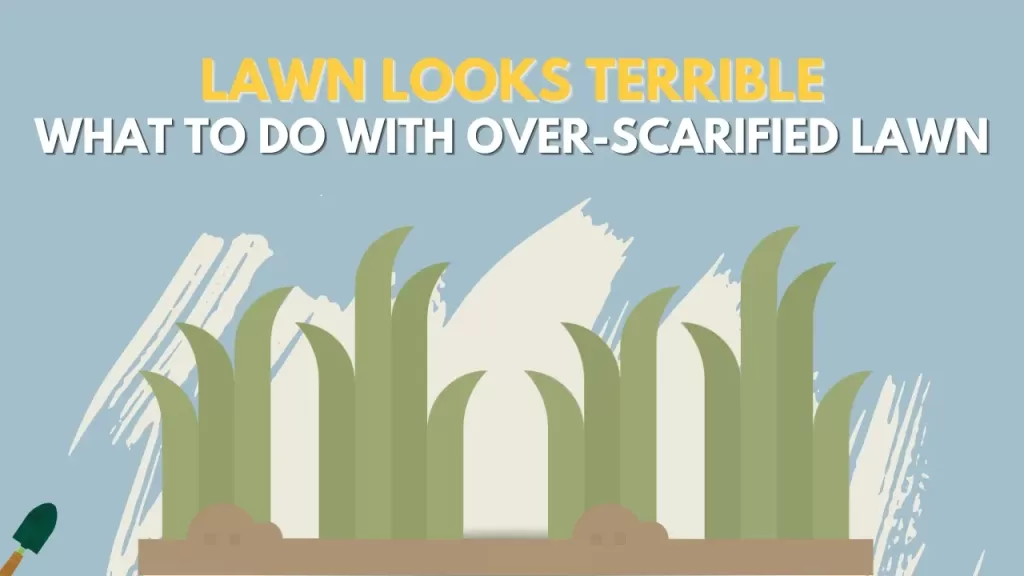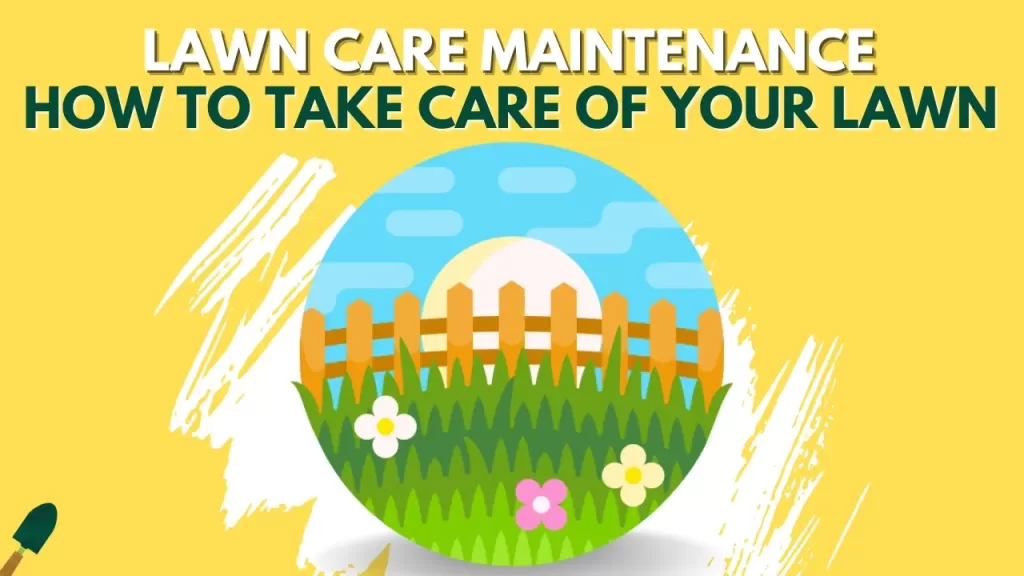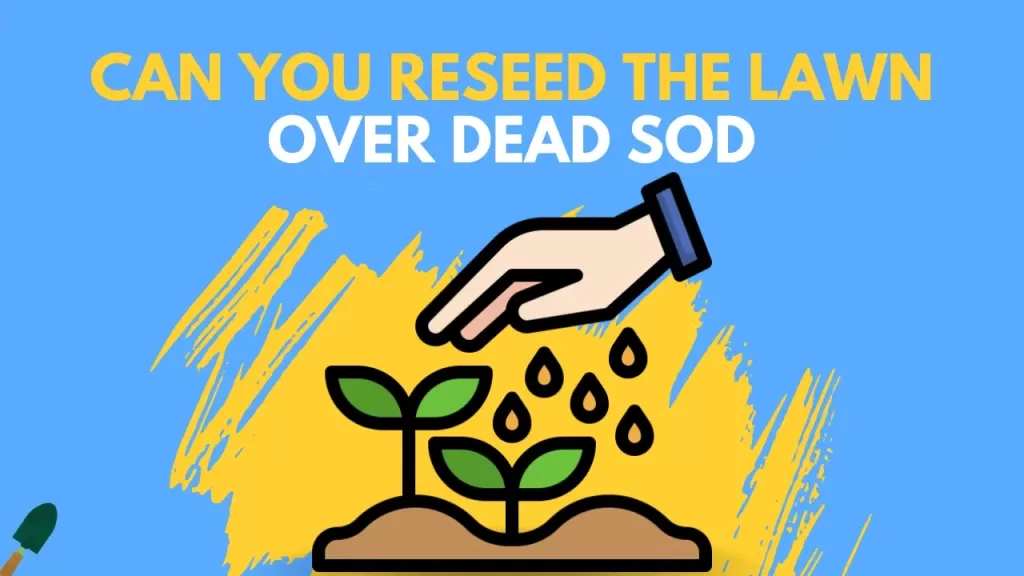Scarified lawn always looks terrible as you want to remove some part of the top layer of the soil. Scarifying will cause some damage to the lawn and it is fine.
If your lawn is looking terrible after scarifying, you don’t need to panic about it as it is a part of the process. Scarifying will damage your lawn but it will recover itself from it very quickly in 4 to 6 weeks. But if you want to make sure that your lawn recovers fast, you can overseed and then fertilize your lawn to give it a boost.
Now you don’t need to worry about your terrible-looking lawn, but if you want to know what scarification is, how to properly do it, and how to make sure that the lawn recovers quickly, read on as we talk about all of these things in detail.
What Is Scarification?
So what is scarifying the lawn? Lawns build up a layer of dead clippings after the mowing process or grass which have died and not been removed. Eventually, these grass clippings add up in the top layer of the soil, which blocks essential nutrients and air to get to the soil and the roots of the grass. This layer is called thatch.
So scarifying the lawn removes the thatch that has been building up, by using the help of a scarifier which has vertical blades which extract the thatch from the soil and open up the top layer of the soil.
Removing thatch is also necessary, as it holds up moisture in the winter and damages the lawn by attracting moss and other diseases. So scarifying your lawn will help prevent moss and other fungus diseases which are caused by moist soil.
When Should You Scarify The Lawn?
The best time to scarify the lawn is in the spring in autumn, when the lawn has time to recover after the scarifying process before winter comes.
Doing scarifying in spring or autumn is also very crucial as the thatch can hold moisture in the winter season which can attract moss or other fungal diseases to the lawn, so doing scarifying in the spring will make sure that you don’t have any moss in the winter.
How To Prepare Your Lawn For Scarification?
Before starting the scarification process on the lawn, you need to prepare your lawn so that you can scarify your lawn properly.
You first need to kill moss in your lawn, so that you can remove the moss properly when you scarify your lawn. To kill moss, apply a moss killer to the lawn. It will kill the moss and make it black so when you scarify your lawn you can focus on that area more.
After you have applied moss killer, the second thing to prepare your lawn is to mow it shorter. What mowing does is ensure that when you scarify the lawn you don’t pull out excess grass from the soil.
After you have prepared your lawn, scarify the lawn in the afternoon, so that all the dew has dried up or a damp lawn can cause some tear up.
Heavy Scarification v/s Light Scarification
If you want to scarify your lawn, you can go with light scarification or heavy scarification, but this depends on certain things, like how much thatch is in your lawn and what time of the season you are scarifying your lawn, and how much time lawn has to recover before it goes dormant.
Let’s discuss all the points in detail:
- Thatch – deciding whether you should scarify the lawn lightly or heavily will mostly depend on how much thatch has built up in the lawn. If your lawn has too much thatch then you need to scarify the lawn heavily or the scarifying won’t help the lawn to become healthy and moss-free.
- Season – if you are scarifying the lawn in the spring then you can do it heavily as the lawn has time to recover in the summer and fall. But if you are scarifying in the late summer or fall, you should do it lightly as the lawn doesn’t have much time to recover properly.
- Lawn health – your lawn health is also a factor in determining how much you should scarify the lawn. If your lawn is healthy and in good shape then you can scarify it heavily because it can recover itself. But if your lawn is unhealthy and weak then you should do it lightly so you don’t damage it.
P.S. – if you can’t decide how much scarification you should do to the lawn, then start with the highest setting in the scarification machine and start doing the scarification. After the first round check how much thatch has been removed and how much grass has been removed with it. If you see that there is more thatch left on the lawn then repeat the process. Do this process until you are satisfied.
Have You Scarified Your Lawn Too Much? – Over Scarified Lawn
Scarifying your lawn too much is the most common mistake a lawn owner will make, thinking that scarifying more will make your lawn good but scarifying the lawn too much can remove all the grass from the lawn and damage it so much that it can’t recover.
Some lawn owners may hire an expensive scarifier for their lawn and over-scarify their lawn to recover the rent of the machine but doing it they ruin their lawn.
Scarify your lawn one to two passes, one in a horizontal direction and one in a vertical direction so that you don’t leave any space in the lawn, and keep the settings of the scarifier high.
After scarifying the process one time, if you found out that there is still thatch then you can do the scarification again, but if you scarify too much the first time, then you can’t do anything about it.
How To Revive A Lawn After Scarification?
After scarification, your lawn will definitely look terrible, but you don’t have to worry about it as it is a part of the process.
When you scarify the lawn, the lawn will recover itself in 2 to 4 weeks but if you want to give your lawn a little help recovering, then you can do certain things to make sure the lawn recovers quickly and properly.
- Overseeding – overseeding after the scarification will help the lawn to recover quickly as the new seeds will have a lot of space in the lawn to germinate and grow. It will also block the growth of any unwanted plants which have come up to the top of the soil.
You don’t need to do any special process for overseeding. Just spread the seed evenly to the lawn and lightly afterwards. After a week or two, you will start seeing new grasses in the lawn and your lawn will become thick and beautiful.
- Add topsoil – when you scarify the lawn you remove the top layer of the soil and the roots of the grass become exposed. Adding topsoil will make sure that the roots get covered with nutritious soil which will help the lawn recover quickly.
- Fertilize – if you want to recover the lawn quickly and help boost the process, fertilization will be very helpful as it provides essential nutrients to get into the roots of the grass which was blocked until now due to the thatch build-up in the lawn.
Fertilize with a fast-release fertilizer after the scarifying to give an early boost of nitrogen to the grass and then fertilize your lawn every six months with a slow-release fertilizer which will make sure that you don’t burn the lawn with over-fertilization.
- Watering – after you have overseeded and fertilized the lawn you need to properly water the lawn. Watering the lawn is very crucial to recover the lawn after scarifying. First, you should water the lawn lightly so that the seeds don’t get washed away. Check if the soil is moist throughout the day to boost the germination of the seed. Water the lawn 2-3 times a day for the first week then start increasing the amount and reducing the frequency.
After the first week, you need to water deeply and infrequently so that the grass needs to go deep roots in the soil, which will make the grass drought and heat-resistant and help the lawn recover quickly.
Taking Care Of Your Lawn After Scarification
Taking care and maintaining your lawn after the scarification is very crucial after you have done overseeding to revive the lawn. And the three factors to maintain your lawn are watering, fertilization and mowing. Let’s discuss these factors in detail:
- Watering – one of the three factors to maintain a beautiful lawn is to water your lawn properly. You need to make a habit of watering your lawn less frequently with 2-3 inches of water to make the roots go deeper for the search for water. This will make the grass heat and drought resistant and help your lawn to survive the summer heat.
- Fertilization – fertilization is another key factor to maintain your lawn. Fertilize your lawn with slow-release fertilizer every six months to keep the soil healthy and nutritious for the grass to grow thick and long. Fertilizer also helps the lawn to keep other unwanted plants like weeds to grow in your lawn.
- Mowing – Mowing is last but not least. After you have overseeded your lawn, give the lawn at least 4 to 6 weeks before you mow your lawn for the first time as the grass needs to establish the roots properly or the new grass can get stressed and your lawn can have patches. Make a schedule for mowing your lawn and mowing frequently and less than 1/3rd of the grass to promote sideways growth of the grass.
Try to change the direction of the mowing every time you mow so that the grass doesn’t bend in one direction and cover other grass blades.
How Long Does It Take For Grass To Heal After Scarifying?
It takes between 4 to 6 weeks to recover your lawn from the scarifying process. But you can boost the recovery process by doing the scarification properly and overseeding and fertilizing your lawn after the scarification.
When Should You Not Scarify Your Lawn?
You should not scarify your lawn when the lawn is too wet or too dry. If the lawn is too wet, it can pull out the grass with the roots along with the thatch and if the lawn is too dry, it will be very difficult to remove the thatch. Water your lawn 2-3 days before you want to scarify to make sure it is moist when you scarify the lawn.
Should I Mow The Lawn Before Scarifying?
Yes, you should mow your lawn before you scarify the lawn to make it easier to detach. If the grass is too long then when you scarify the lawn it can pull out too much grass from the soil. Mow your lawn a week before so that the grass is not stressed and is ready for the scarifying process.





